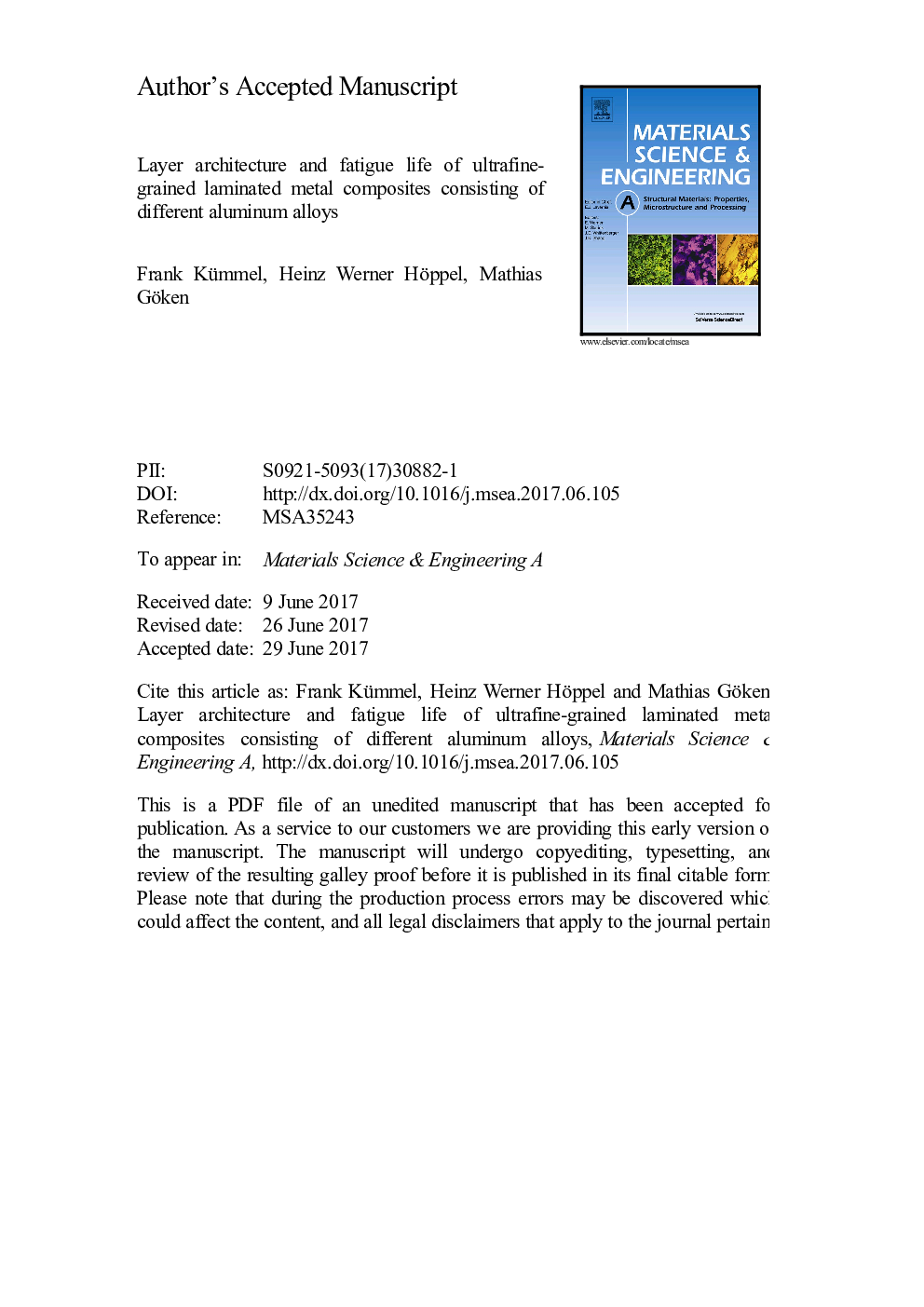| Article ID | Journal | Published Year | Pages | File Type |
|---|---|---|---|---|
| 5455852 | Materials Science and Engineering: A | 2017 | 22 Pages |
Abstract
The influence of the layer architecture on the fatigue properties of ultrafine-grained laminated metal composites is studied. Composites with different stacking sequences of the aluminum alloys AA1050, AA5005, and AA2024 were produced by accumulative roll bonding and characterized by microstructural analysis and nanoindentation experiments. The fatigue properties were determined by 3-point bending tests performed on a vibraphore testing machine. Subsequently, the crack path was analyzed using a scanning electron microscope. It was observed that the fatigue crack bifurcates close to the interface if the hardness difference between both materials is high. The crack then spreads parallel to the interface within the softer material. This crack branching is more pronounced at high stress amplitudes caused by a significant accumulation of plastic deformation in front of the interface. Consequently, at high stress amplitudes the fatigue lives are significantly higher for composites with a high hardness difference between the layers. At low stress amplitudes, at which crack initiation is the dominating fatigue mechanism, the material of the outer layer mainly determines the fatigue lives. Composites with the same outer layer, but different interlayers, show very similar high cycle fatigue lives. Thus, by an appropriate layer architecture ultrafine-grained laminated metal composites with significantly enhanced fatigue properties can be designed.
Related Topics
Physical Sciences and Engineering
Materials Science
Materials Science (General)
Authors
Frank Kümmel, Heinz Werner Höppel, Mathias Göken,
